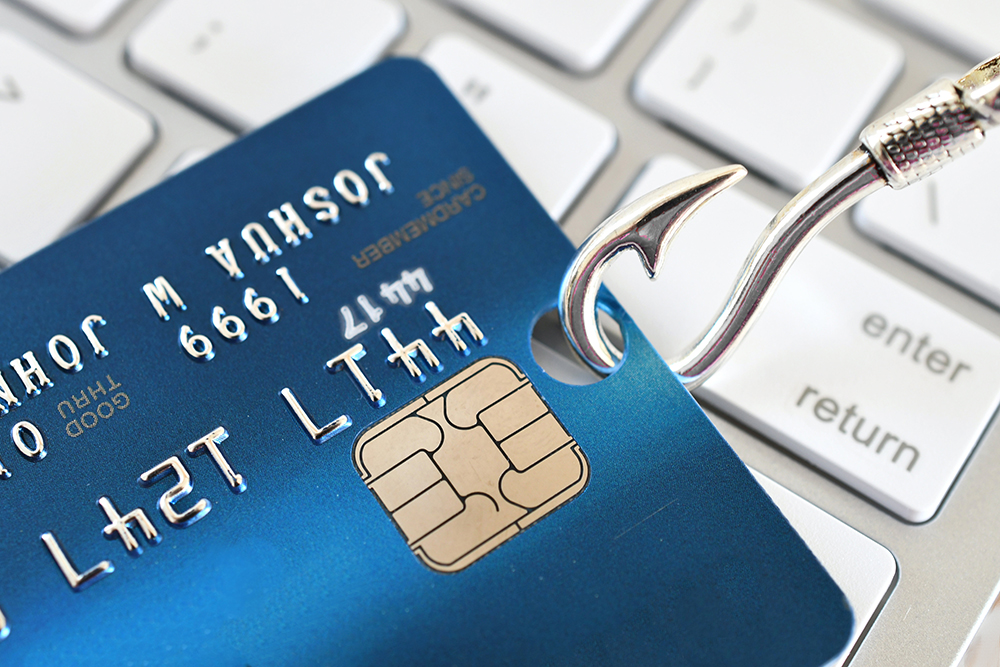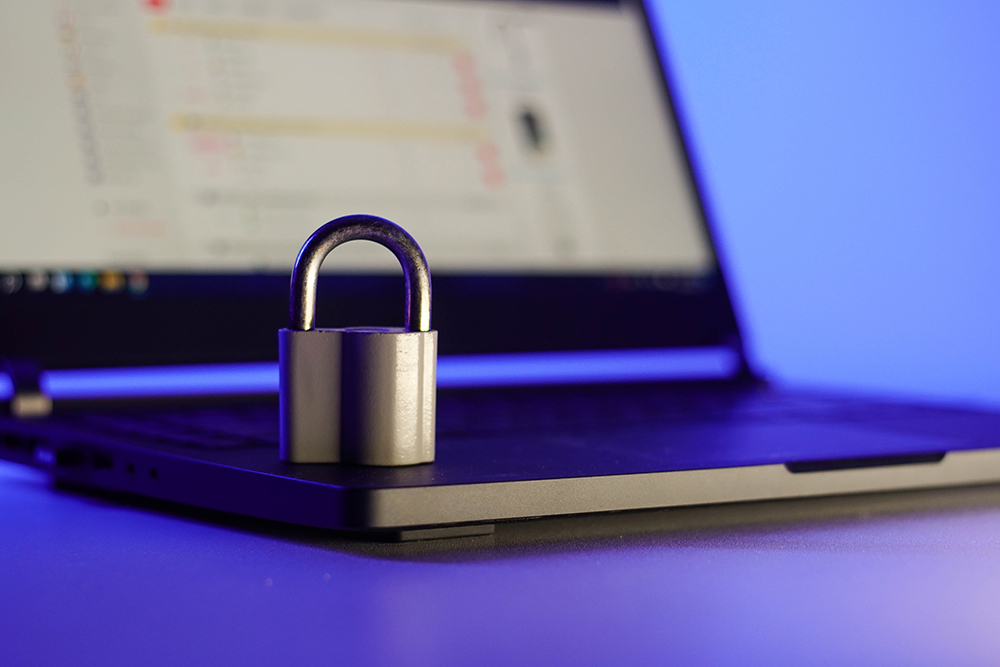Identity theft has become a significant concern in the modern digital era. Cybercriminals develop increasingly sophisticated methods to acquire personal information and perpetrate fraud as technology advances. This comprehensive guide offers valuable insights into identity theft, encompassing its various forms, the most effective protection strategies, and how to identify and address identity theft incidents giving better online security.
Types of Identity Theft

Financial identity theft
This occurs when an individual uses your personal information to open bank accounts, credit cards, or loans under your name. financial identity theft is a rising threat in today’s rapidly evolving digital environment, necessitating heightened awareness and protective measures. In such instances, criminals obtain sensitive personal data and exploit it to open bank accounts, apply for credit cards, or secure loans, all under your identity.
These malicious actions can severely disrupt your life, burdening you with debt and struggling to prove your innocence. However, you can shield your assets and reputation by educating yourself about financial identity theft and implementing proactive protection strategies. Knowledge is power; together, we can combat financial predators and maintain peace of mind.

Tax identity theft
This happens when someone files a fraudulent tax return using your Social Security number to claim a tax refund. Tax identity theft, an increasingly prevalent issue, often goes unnoticed until it is too late. Victims may discover that a criminal has filed a false tax return using their Social Security number and collected a substantial refund under their name. Such illicit activities can cause financial turmoil and persistent stress and jeopardize your credit score.
Tax identity theft perpetrators utilize various methods to access personal information, including phishing emails, system hacks, and even searching through discarded documents. Staying informed and vigilant is crucial to prevent such crimes. Monitor potential fraud indicators, exercise caution when sharing personal information, and consider investing in identity theft protection to secure your financial future. Remember, proactivity is your most robust defence against tax identity theft.

Medical identity theft
This arises when someone exploits your personal information to receive medical care, prescription drugs, or medical equipment. Medical identity theft, an often-overlooked issue, is becoming increasingly common as electronic devices and healthcare systems become more interconnected. In these cases, criminals use your data to obtain treatments, expensive prescription drugs, or medical equipment under your identity.
This identity theft can severely affect your finances, medical records, and overall sense of security. Implementing proactive measures to protect your personal information and regularly reviewing your medical records is vital to ensure unscrupulous individuals do not jeopardize your health and welfare. Safeguarding our medical histories should be a top priority, and no one should endure the repercussions of a stolen medical identity.
Child identity theft
Sadly, this occurs when someone misappropriates a child’s identity to open new accounts, apply for loans, or certain government benefits. Child identity theft is an alarming and increasingly common issue in the digital era. Unprincipled individuals exploit the unsuspecting nature of children by stealing their personal information to establish new accounts, apply for loans, or acquire government benefits.
This insidious crime often goes undetected until the child reaches adulthood and discovers their credit history has been compromised for years. Recognizing the severity of this issue, educating ourselves about warning signs, and adopting proactive measures to shield our children from victimization are crucial. Remember, awareness and vigilance are our most potent defences against identity thieves targeting the most vulnerable members of society.

Senior identity theft
This form specifically targets elderly individuals, who are generally more susceptible to scams and possess more significant assets than younger individuals. Old identity theft is an escalating concern for the elderly population. Often retired and reliant on their savings, seniors who fall victim to identity theft may suffer substantial financial losses, frequently losing twice as much as the general public.
Elderly individuals must remain informed and vigilant in safeguarding their personal information, as criminals recognize their targets’ vulnerability and reluctance to report fraud or identity theft incidents. Senior identity theft could even involve family members or acquaintances, underscoring the importance of reminding our elderly loved ones to monitor their bank statements and secure their personal information to prevent devastating financial consequences.

Synthetic identity theft
Amazingly, occurs when criminals amalgamate real and fabricated information to generate a new identity for fraudulent purposes. Synthetic identity theft is an increasingly prevalent and dangerous form of identity theft. Perpetrators combine accurate and falsified data to create a novel identity, facilitating fraud.
Synthetic identity theft is often more challenging to detect than other types, as the false information employed is not easily traceable. As a result, individuals must exercise caution in protecting their personal information online and in physical records to prevent unauthorized access. Synthetic identities can be utilized for various purposes, including loan and credit card fraud, inflicting significant financial damage on unsuspecting victims. All citizens should take extra precautions to secure their data from intrusion or exploitation by criminals engaging in synthetic identity theft.
Employment identity theft
Surprisingly, occurs when someone exploits your personal information to secure employment or benefits under your name. Employment identity theft involves fraud using an individual’s personal information, such as their Social Security number, to obtain a job or government benefits.
Victims are often unaware of the theft until they face denied benefits or discover discrepancies in tax forms. Thieves may use the stolen identity to get hired and commit crimes under that identity or access company data and funds. Protecting personal information and monitoring accounts are essential measures to prevent becoming a victim of this type of identity theft.

Criminal identity theft
Amazingly, occurs when an individual is arrested and provides personal information to law enforcement, resulting in a criminal record under your name. Criminal identity theft transpires when someone furnishes your personal information to law enforcement, establishing a criminal record in your name upon arrest. This malicious act can have severe consequences, as victims are wrongly associated with crimes they did not commit.
They often remain unaware of the issue until they are denied a job, loan, or other opportunities due to a false criminal record. Safeguarding your personal information is vital to minimize the risk of identity theft. Exercise caution when sharing sensitive data, such as your Social Security Number, bank accounts, or other identifying information.
Social Security identity theft
This arises when someone employs your Social Security number to access benefits or other services. Identity thieves often target Social Security numbers to perpetrate highly damaging forms of identity theft. Criminals may use an individual’s Social Security number to establish accounts, apply for loans or claim benefits.
Protecting your Social Security number is crucial to prevent this threat. Refrain from carrying your card with you, shred documents containing the number, and be cautious of unsolicited requests for your information. Vigilance is essential to safeguard your identity and hard-earned benefits from theft.

Data breach-related identity theft
This happens when your personal information is stolen during a data breach and subsequently employed for fraudulent purposes. Data breaches involve hackers’ theft of sensitive data from companies, which can lead to identity theft. Your personal information may be misused to open accounts or make purchases in your name after being stolen in a data breach.
Upon acquiring data such as Social Security numbers, credit card numbers, or other personal details, hackers can create fake IDs to empty your bank accounts or accumulate debt that destroys your credit. To mitigate this risk, closely monitor your accounts, utilize strong passwords, and be cautious of unsolicited communications requesting personal data or account access. Staying vigilant is critical to reducing your identity theft risk due to a data breach.
Identity Theft Protection and Prevention Strategies
- Utilize strong, unique passwords and change them regularly: Protecting your personal information in today’s digital world is critical to preventing identity theft. Using strong and unique passwords for each online account is a crucial strategy, as is regularly changing those passwords. Be cautious of unsecured Wi-Fi networks allowing hackers to access your data, and avoid oversharing personal details on social media.
Shredding sensitive documents with a cross-cut shredder and being mindful of phishing emails and malicious links are also necessary. By following best practices for safeguarding your data and staying vigilant of scams, you can significantly reduce the risk of having your identity stolen.
- Enable multi-factor authentication when possible: Enabling multi-factor authentication for your accounts is critical to protect yourself against the rising threat of identity theft. Requiring additional verification beyond just a password, such as a security code sent to your phone or authentication through a fingerprint or facial recognition, makes it significantly more difficult for thieves to access your accounts.
Many significant services offer multi-factor authentication today, and it is one of the most effective ways to prevent unauthorized access, even if your password is compromised. Combined with monitoring your accounts and credit report for suspicious activity, using multi-factor authentication is a vital identity theft protection strategy to deploy.
An introduction to the topic of two-factor authentication that provides a comprehensive evaluation of popular secondary authentication methods. Click here to buy
- Exercise caution when sharing personal information online: Identity theft protection requires vigilant prevention strategies in today’s digital world. Avoid oversharing personal details on social media and be cautious of unsecured Wi-Fi networks, which can allow hackers to access your data. Protect financial information by shredding sensitive documents and monitoring accounts closely. Using strong passwords, two-factor authentication, and a password manager helps create a robust defense against the misuse of your identity.
While no system is foolproof, taking proactive measures to safeguard personal information limits opportunities for thieves to commit identity fraud or theft. Staying alert to the threat of data breaches and being selective about what data is shared publicly are impactful ways to maintain control over your identity.
- Connect to secure Wi-Fi networks and avoid public Wi-Fi: Protecting your identity in today’s digital world requires vigilance and proactive strategies. Using secure Wi-Fi connections and avoiding public Wi-Fi networks is critical, as unsecured networks can allow hackers to steal personal data and login credentials. Shredding sensitive documents before disposal and using strong, unique passwords for online accounts are essential steps everyone should take.
Monitoring financial statements regularly and reporting anything suspicious immediately can help minimize damage from identity theft. While nothing is foolproof, following best practices and remaining cautious of phishing emails and malicious websites goes a long way toward keeping your identity safe.
- Install security software and keep devices up to date: Identity theft protection requires constant vigilance and proactive measures. Use security software with real-time scanning on all your devices, including computers, tablets, and phones. Keep software and operating systems up to date with the latest patches, as malicious hackers often exploit vulnerabilities to steal data and identities.
Only use secure Wi-Fi connections and never conduct financial transactions or access sensitive accounts on public networks. Be cautious of unsolicited phone calls, emails, or messages requesting personal information or prompting you to click on links or download attachments. Following these best practices can help reduce the risk of becoming an identity theft victim.
- Monitor credit reports and financial accounts regularly: To prevent identity theft, regularly monitor your credit reports and financial statements for any signs of unauthorized activity. Never share sensitive personal information like your social security number or banking password with others, and use secure Wi-Fi connections.
Shredding sensitive documents with a cross-cut shredder and using strong, unique passwords for online accounts also helps make you a more challenging target. Following these best practices can help reduce identity theft risk, but staying vigilant about your personal information is critical.

Identity Theft Protection Strategies
- Set up fraud alerts with credit reporting agencies: Protecting your identity in today’s digital world requires vigilance and proactive measures. Setting up fraud alerts with credit reporting agencies is a critical first step to monitoring suspicious activity. Beyond that, use strong and unique passwords for online accounts, enable two-factor authentication whenever possible, be cautious of unsecured Wi-Fi connections, shred sensitive documents before throwing them out, and be wary of phishing emails or malicious links.
Taking a layered approach to identity theft prevention can help thwart would-be thieves and give you peace of mind that your personal information is secure.
- Be vigilant against phishing attempts: Protecting your identity in today’s digital world requires constant vigilance. Be wary of unsolicited requests for personal information via phishing emails, phone calls, texts, or suspicious websites. Only share sensitive data over secure Wi-Fi connections and never respond to messages claiming you’ve won a prize or need to ‘update’ your account.
Shred sensitive documents before throwing them out and monitored financial statements closely for unauthorized charges. Following best practices and remaining skeptical of unexpected requests can help reduce your risk of becoming an identity theft victim.
- Shred sensitive documents before discarding them: Identity theft is a serious crime that can have devastating consequences. To protect yourself, experts recommend shredding sensitive documents like bank statements or credit offers before throwing them out. Be cautious of unsecured Wi-Fi networks, which can allow hackers to steal personal data. Monitor financial accounts regularly for suspicious activity and report anything fraudulent immediately. Using strong, unique passwords and two-factor authentication on accounts adds an extra layer of security. While no system is foolproof, following best practices and remaining vigilant can help reduce the risk of becoming an identity theft victim.
Frequently Asked Questions:
Q1: What is identity theft?
A1: Identity theft occurs when someone uses your personal information, such as your name, Social Security number, or credit card number, without your permission to commit fraud or other crimes.
Q2: How can I protect myself from identity theft?
A2: Some ways to protect yourself include using strong, unique passwords for your online accounts, enabling multi-factor authentication, being cautious when sharing personal information online, and regularly monitoring your credit reports and financial statements.
Q3: What should I do if I suspect I am a victim of identity theft?
A3: If you suspect you are a victim of identity theft, report the incident to the appropriate authorities, such as your bank or credit card company and the Federal Trade Commission (FTC). You should also place a fraud alert on your credit reports and consider a credit freeze to prevent further damage.
Q4: What is a credit freeze?
A4: A credit freeze restricts access to your credit report, making it more difficult for identity thieves to open new accounts in your name. You can request a credit freeze with the three major credit bureaus: Equifax, Experian, and TransUnion.
Q5: What is a fraud alert?
A5: A fraud alert is a notice placed on your credit report that warns creditors that you may be a victim of identity theft. Creditors must then take extra steps to verify your identity before granting credit in your name.
Q6: How do I report identity theft?
A6: You can report identity theft to the Federal Trade Commission (FTC) through their website or by calling 1-877-ID-THEFT (1-877-438-4338).
Q7: Can I prevent identity theft entirely?
A7: While you cannot wholly prevent identity theft, you can significantly reduce your risk by implementing strong security measures and protecting your personal information.
Q8: What is the difference between identity theft protection services and identity theft insurance?
A8: Identity theft protection services typically include credit monitoring, identity monitoring, and recovery assistance. In contrast, identity theft insurance covers expenses related to identity theft, such as legal fees, lost wages, or costs associated with restoring your identity.
Q9: Are children at risk for identity theft?
A9: Yes, children can be victims of identity theft, as criminals may target them for their clean credit histories and unchecked personal information.
Q10:What should I do if my child’s identity has been stolen?
A10:Report the theft to the appropriate authorities, such as the Federal Trade Commission, and place a fraud alert on your child’s credit report. Contact the Social Security Administration if their Social Security number has been compromised.
Q11: How can I protect my elderly relatives from identity theft?
A11: Educate them about identity theft risks, help them set up robust security measures for their accounts, and encourage them to regularly monitor their financial statements and credit reports.
Q12: Can identity theft affect my credit score?
A12: Yes, identity theft can negatively impact your credit score if fraudulent accounts are opened, or unauthorized transactions are made in your name.
Q13: How long does it take to recover from identity theft?
A13: Recovery times vary depending on the severity of the identity theft and the steps taken to resolve it. Some victims may recover in a few months, while others may take years to restore their identity and credit.
Q14: What are some warning signs of identity theft?
A14:Warning signs include unexplained withdrawals from your bank account, foreign accounts or charges on your credit report, receiving bills for services you did not use, and being contacted by debt collectors for debts you do not owe.
Q15: Can my Social Security number be changed if it has been stolen?
A15: In limited circumstances, the Social Security Administration may issue a new Social Security number if your existing number has been compromised and is causing significant, ongoing harm.
Q16: What is a data breach?
A16: A data breach occurs when unauthorized individuals gain access to sensitive information, such as personal data, financial information, or intellectual property.
Q17: How do I determine if my information was compromised in a data breach?
A17: The affected company or organization may notify you, or you can monitor your financial accounts and credit reports for any suspicious activity.
Q18: What is phishing?
A18: Phishing is an online scam where criminals trick individuals into revealing sensitive information, such as passwords or credit card numbers, by posing as a trustworthy entity through email or other electronic communication.
Q19: Can identity thieves use my information to file a fraudulent tax return in my name?
A20: Yes, identity thieves can use your personal information, such as your Social Security number, to file a fraudulent tax return in your name and claim a refund.
Q20: What should I do if I believe someone has filed a fraudulent tax return using my information?
A20: Report the incident to the Internal Revenue Service (IRS) by filing Form 14039, Identity Theft Affidavit, and contact local law enforcement and the Federal Trade Commission to report the identity theft.
Conclusion
In today’s digital world, identity theft is a growing concern. You can significantly reduce your risk of becoming a victim by staying informed, implementing strong security measures, and monitoring your financial accounts and credit reports regularly. If you find yourself a victim of identity theft, report the incident to the appropriate authorities to minimize the damage and protect your financial well-being.















